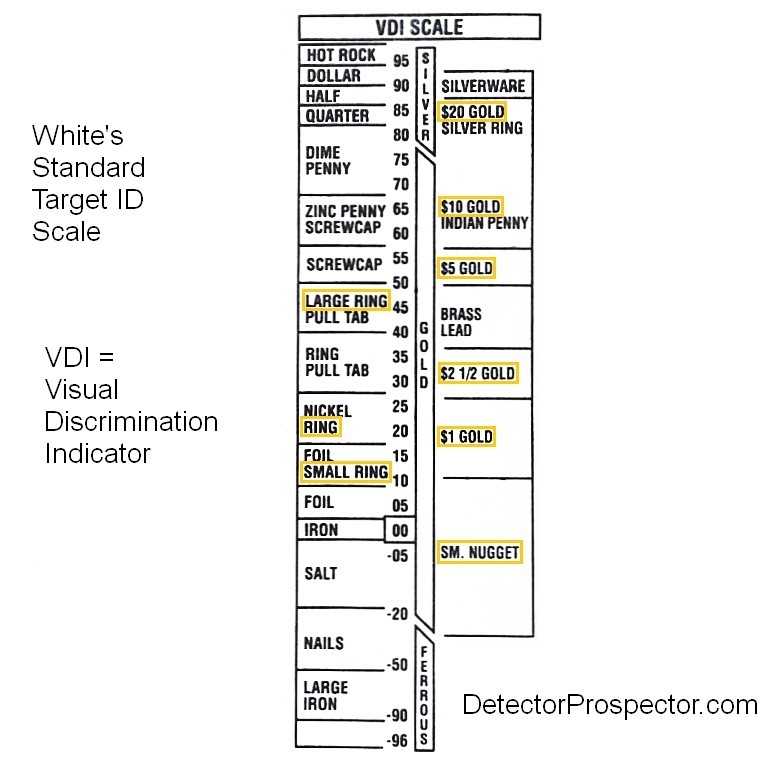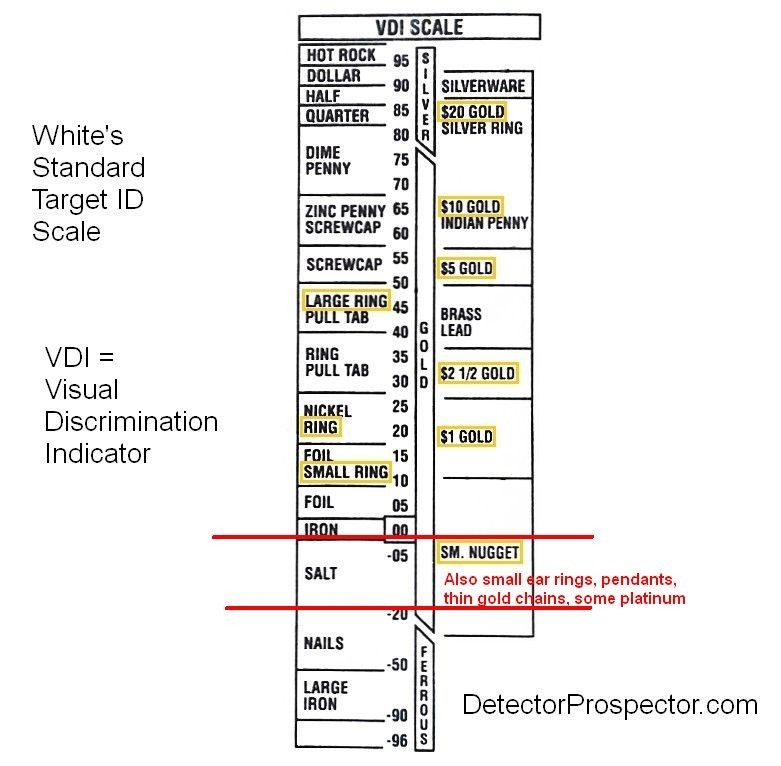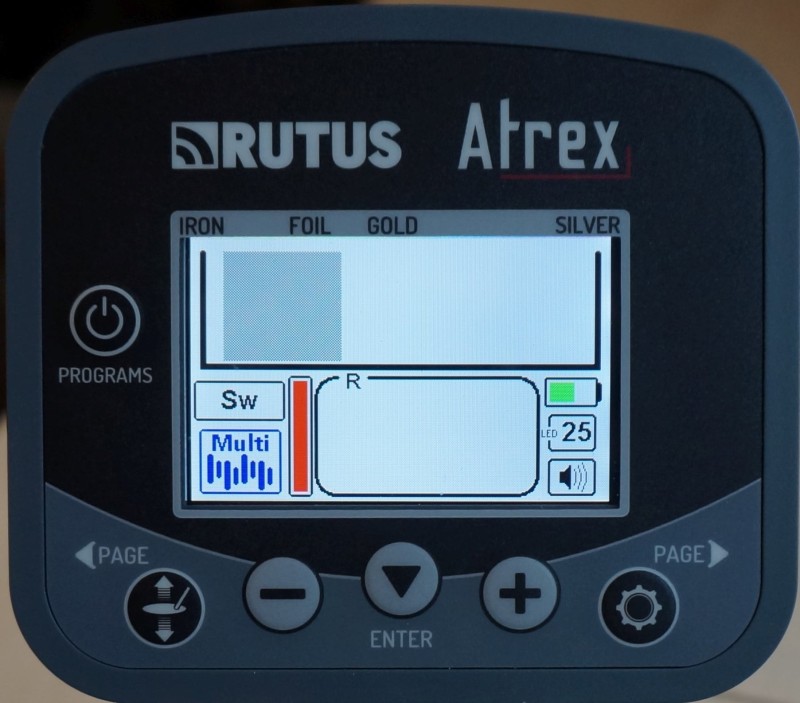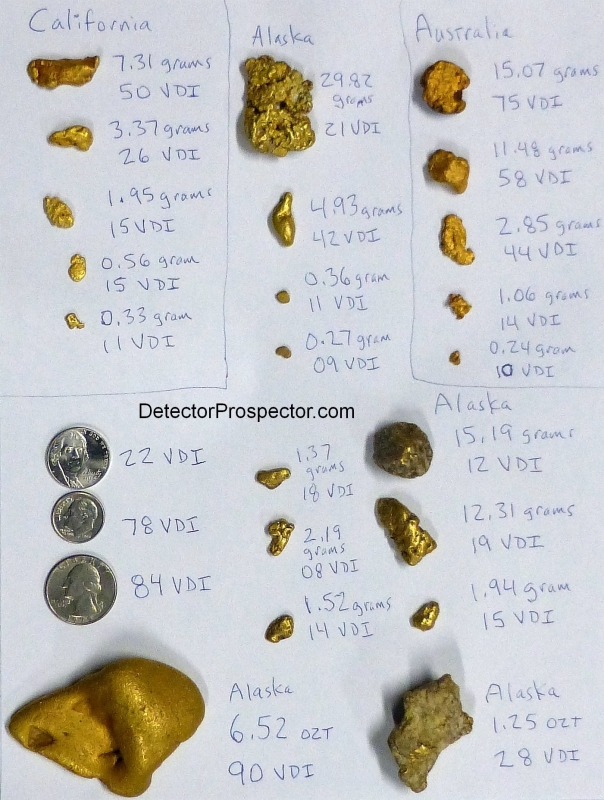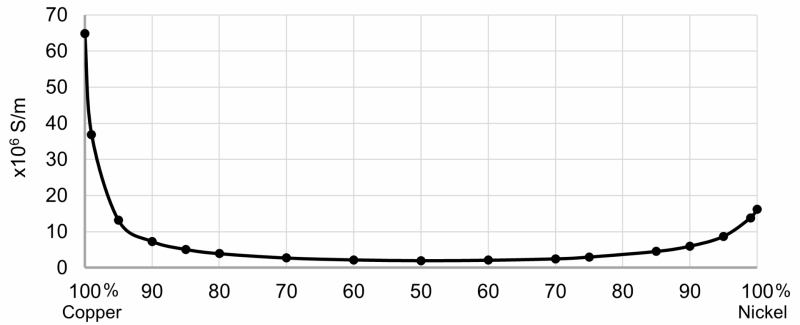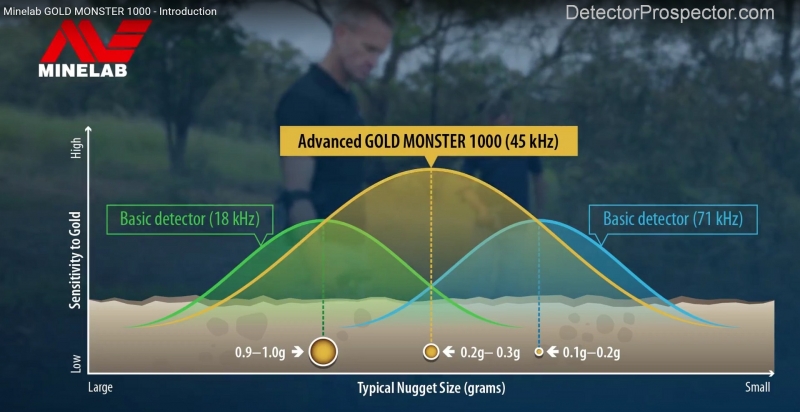Leaderboard
Popular Content
Showing content with the highest reputation on 01/22/2022 in all areas
-
Wednesday I had a brief moment in the arctic air that is hammering PA. It was going up to 50 degrees, So I thought I'll take what I can get during this frigid spell. Off to the park I went to try for some silver. I had about 2 hours to complete the mission before my wife decided to cash in on my insurance policy. Three clad and I dropped a silver in the box, A 1964 rosie. Light was fading and a bunch of clad later I decided to detect back to the truck. Starting to get a little colder I needed to adjust my hat and as I sat my Tesoro on my digger I got a nice tone. Thought maybe it was just the ground sounding off. Once adjusted I swung again and it WAS a good target. Time to dig, At 8'' I had the wonderful Heart Attack moment. All I saw was diamond and a big one!!! Well once cleaned I realized it was a CZ mounted in a silver Mexico setting (CRAP). But I thought to myself it's still beats a white metal ring. I think we all have those Heart Attack moments, some are real and some not so much. At least this one didn't turn out to be a pull tab ring. Pretty sure this is what drives us all to keep digging. I love each and every crappy target I dig knowing something good is just around the corner.17 points
-
16 points
-
Been in another skunk period of a week or two until today. Got this pretty little nugget in a wash I keep finding gold in. Same wash I found my first two in that got me on the board back in October. A buddy of mine went over it with his Gpx5000 and missed it. This nugget was found 6-8 inches to the side of where I found my third Nugget in this wash. It was in the bar in the middle of the wash and down in the bedrock. I had missed it several weeks ago and didn't hear it. There was a few inches of silt on top and I thought I heard a blip in the threshold so I slowed down to snail pace and then I heard it. Kicked a layer away and now it was unmistakable. Kept digging to bedrock and it was still there. I knew this was going to be gold so I got it on video. I knew because I have not dug any trash in this wash. Hal could hear the signal from 150-200 feet up the wash so he rushed down to see if I got gold. Hal has been here for 4 weeks and still has not found any gold. I am really loving the Gpx6000. This detector is like a gold nugget bloodhound with the scent sniffing capabilities of a Grizzly. Dug out all around the area and dug out the bush better. This was painful as the bush turned out to be cat's claw and I got hooked across the face and those thorns dug in as I moved back. It wouldn't let me go. Lmao. My shirt was stuck to the bush, my hands were stuck to the bush and now all across my face on the right side. I don't know what I hate more choiya or cat's claw. I think probably cat's claw as I get caught up in it more often than choiya. I try to avoid choiya like the plague. It is like getting caught up in a nest of fish hooks. The more you fight getting free, the more you get hooked. The nugget looks like an s. AZGoldman came up to hunt with me and my buddy Hal from Montana. I am surprised I don't have any broken bones in my hand from all the times I hit my hand with the rock hammer when chiseling out bedrock. I dug up all around where I found these nuggets. I have a couple hundred yards or more of bedrock left to work. I am sticking put in my honey hole wash and to hell with the rest of Gold Basin and the weeks of skunks.15 points
-
True perhaps if the only detecting market was the gold nugget market, which it is not. You guys generally sit out things like the fact that the Equinox/Deus 2/Legend debate is now what has the forums on fire, because it has very little to do with nugget detecting. Coin and relic is FTs bread and butter market, and multifrequency is where all the action is. The First Texas response so far is to just discontinue the one multi offering they have had since day one, the Fisher CZ, retaining it only still in a diving model, the CZ-21. They are simply absent from the party. Garrett's Apex may be lackluster, but it at least gets them a mention for that. Fisher is totally out of the discussion. I agree. Minelab basically owns the nugget market, and that's not going to change. It's multifrequency coin and relic detecting we are generally talking about on this thread. It's been and still is FTs main paycheck, and milking old single frequency designs is a losing strategy in the long run. The Impulse AQ is a money and time wasting distraction. They need to bring some real competitive multi to the market fast, or be relegated to simply being Bounty Hunter. That's all they really are now, as they lower the price of the better Fisher and Teknetics models, and move them to the Bounty Hunter brand. May as well just kill Fisher and Teknetics off, and embrace Bounty Hunter. That could work for a long time, just milk that stuff for all it's worth, leveraging their low cost manufacturing facilities, and already paid off development costs, to sell cheaper and cheaper machines. Bounty Hunter F75 for $299? $199? The day is coming. It is a losing strategy in the end, but that has not prevented a lot of companies from going down that road. Unless some huge surprise comes out of left field, that's where I see First Texas heading. Back to it's Bounty Hunter roots, and irrelevancy.6 points
-
Personally I wish they’d can that show. Yep may be entertaining to some but it causes a massive headache here on the ground. The mess left by one team on our station is horrendous, just pulled up stumps and left a disgusting mess with some of the worst rehab I’ve even seen. Then there’s all the units who watch the show and think they can head over and make a killing. Many are totally unprepared, get themselves stuck, lost, break every rule, trespass, steal, leave a mess and worse, some even die.6 points
-
The Quartzite Gold Show is February 11,12,13 and I will have a booth there selling my book. I will be in the section in the parking lot so I can camp out of my chuckwagon Taco and keep an eye on my rig at all times. If anyone is in the area, please stop by and say hello. It would be nice to meet anyone on here that is able to make it.5 points
-
Aye true AG, without Bruce Candy`s input the MD detectors we`d be using would be dinosaurs. We`ve turned this initial top humor vid thread into a bitch, but that illustrates MLs approach has made competitors fairly irrelevant. Depends on your thinking, but I believe the price we pay for MLs products giving them funds for R & D is returned in tech superior MDs that in a more competitive market we may not be enjoying, if my thinking is on the money this throws a cloud over our capitalistic competitive market being able to produce the most tech advanced product. With only going back a little, IMO the Z and the 6K are two prime examples of MLs successful R&D funded by expensive MDs approach. You can drive out to your favorite gold field in many different makes or types of vehicle but your greatest chance of success is the wise use of a ML MD once there.5 points
-
Rumors are flying that First Texas has hired a veteran engineer to upgrade their entire product line. As well as actually make the AQ happen. CAN THIS GUY SAVE THE COMPANY..? The video link below shows off this guys abilities with an advanced product sold to the U.S Government.4 points
-
It also has an environmental impact aspect too; Just think we are single handedly ridding the planet of pull tabs and bottle caps!4 points
-
3 points
-
This post was a response buried deep in a thread on the Equinox Forum, but got long enough on a subject I think about a lot, that it deserved its own thread. Here you go. I find the whole George Payne way of conceptualizing things to be rather out of date myself. That was back in the day when only one thing mattered - detecting coins. Silver coins in particular. So he was looking at frequency, and most importantly, coin size targets. If you do that, fix target size, you get the false idea that frequency corresponds to type of metal. Nickels respond here. Gold coins here. Copper coins here. And the biggie, silver coins here. That's how the first coin discriminators were conceived. But it has also lead to this mythology that frequency corresponds to metals. Gold is high frequency, silver low frequency. No, it's not. There is no correlation between frequency and type of metal if you do not fix the size at some artificial limit. In fact, gold ranges from ground readings all the way to so-called silver readings. If you fix the metal type, frequency corresponds to size. Low frequency big gold, high frequency small gold. There was also ground to deal with, and ground reacts less well at low frequencies, so a double bonus for silver hunters. You might think it is low frequency working better with silver. But you might also think of it in terms of the detector simply being better able to see the silver, for not seeing the ground. It's all about conceptualization, and you can conceive of the same thing from different angles. I consider the old George Payne way of looking at things as obsolete from my perspective. It really was only something that worked well in the United States, and only because of an accident in our coin size and metal types. It allowed a scale to be created that worked well with silver coins and nickels, while knocking out a lot of trash items. In most other countries, our target id scale is worthless because their coins do not fit our classic scale. I detect for gold. I think in different terms entirely. For me frequency does two opposing things. Higher frequency is better for small targets. Small gold, small silver, small copper..... small stuff. But high frequencies also enhance ground, and especially, hot rock responses. The two effects offset each other, and can reverse things if ground is severe enough. This also totally applies not to nugget hunters like myself, but almost anybody hunting coins and relics under any situation but the classic U.S. silver coin regime. Let me explain. So I want to find gold nuggets. I must first think about the nugget size that I am looking for. I can look for the more common small gold, or the rarer large gold. If I want tiny gold, I usually want a high frequency detector, the higher the better. Now, here is the kicker. High frequency does just fine on large gold also. In fact, high frequency just detects well on everything - in the air. So air test a Gold Bug 2 on things, and it is amazing. Unfortunately, the high frequency also "lights up" the ground to an amazing degree, and it is hard to get good depth on anything at very high frequencies. The signal attenuates rapidly in the ground, and the worse the ground is (more magnetite in general), the faster the depth drops off. Hot rocks that never responded at low frequencies are now everywhere at high frequencies. Lower frequency starts looking better not just because it does better on large targets, but just as much because it is less reactive to the ground. The 71 kHz Gold Bug 2 is an amazing detector. I can find pinhead gold with it. The big caveat is that in most nugget ground it has low penetration, and is very poor on large nuggets at depth. Not because it air tests poorly on large gold, but because the ground sucks up the signal. 71 kHz is great for small gold, and even large gold in the mildest soils, but in bad ground it has poor depth, and makes hot rocks a real issue. If I am looking for large gold at depth, I might very well use a lower frequency VLF in the old days, just as much because it is responding less to the ground as anything else, allowing large gold to be more easily found at depth. For my purposes, a PI detector for a long time was just a high power, super low frequency detector. Huge punch on large gold, with minimal ground response. So PI took over early on from the VLF low frequency, large nugget detectors of the time. I mentioned relic detecting and coins in other countries. If you detect Europe, our U.S. coin scale is garbage. It's not "low frequency = silver." Over there silver can be all over the target id map. Huge silver coins. Or tiny silver coins. Or small coins hammered thin as foil. Or those hammered coins cut to make change. Silver under those circumstances occurs anywhere on your target id scale from ground to the highest reading, 0 to 100. It all just depends on the size, with a little ground effect tossed in to drag things down. So in Europe, if you want to chase tiny silver cut coins, or very small gold coins, higher frequencies work well, whether it is gold or silver. The metal does not matter. It is size that matters. Relic hunters see the very same thing. High frequencies find the small bits, regardless of what they are - worst fact being tiny ferrous. I long ago tossed the frequency and metal thing in my garbage can. Here is my reality. High frequency will help me with smaller targets, but also make dealing with the ground harder. Low frequencies simply have less ground and hot rock response, and also less tiny trash stuff response, making them better if I want want to focus on larger targets, like coins or rings. In my lifetime experience there is a crossover point for gold, and going too high enhances tiny gold nuggets, but also loses depth due to ground issues. A sweet spot develops around 50 kHz, which White's chose ages ago in the Goldmaster II, as being great for small gold nuggets, while still retaining punch in bad ground on larger gold nuggets. Minelab rediscovered this with the Gold Monster, and went with 45 kHz for this very reason. They found pushing high did better on tiny stuff, but the cost in larger heavier gold was not worth it to serious nugget hunters in bad Australian type ground. If I was hunting tailing piles for ounce type gold nuggets, it is hard to beat a 15 kHz type detector, just like that ancient 15 kHz Garrett Groundhog circuit, that was at the time a high frequency, but in retrospect was a great large nugget lower frequency. The White's MXT at 13 kHz is superb on large nuggets in trashy locations. If you are in Europe, that 15 kHz sweet spot applied for a long time, but more recently people have discovered the benefits of higher frequencies on these tiny cut silver and small gold coin finds. Pulse Induction did serve as super low frequency for a long time. You gave up small gold to get big gold as deep as possible. The lack of ground response allows use of extra large coils. It is interesting to me that as newer PI detectors are pushed to get more sensitive to small gold, that ground and hot rocks have also become more problematic. The newest PI nugget hunters suffer from hot rock responses you never saw on the old PI models. PI is getting more like VLF over time. So Billy, does Minelab put all this in Multi-IQ processing? Of course. But not in the way you think. They think more like me. It's every bit as much about ground, and saltwater, and even EMI, and what you do not want to detect, more so than metal types. A primary choice is saltwater - that forces a low frequency mix simply to avoid the salt response. Which, as I seem to have explained to beach guys a million times, also knocks out small gold responses. For large coin detecting a lower frequency mix gives clean responses on larger targets like U.S. coins and rings, while getting less ground response, fewer hot rocks, and far less tiny trash signaling. It is not targeting silver coins per se, just larger stuff. For tiny items, gold nuggets, small hammered silver coins, a higher frequency mix works well, but you will deal with more ground and hot rock response, more tiny trash. Forget metal type. Think size and ground, including saltwater, and hot rocks. As you increase frequency, everything responds better, and small items that respond poorly or not at all at low frequencies will do better. Ground, saltwater, and hot rock signals also increase with frequency. The first cut off is at saltwater. To work there, you must have a lower frequency mix to eliminate salt signal, and you lose all tiny stuff as well, tiny aluminum, tiny gold. This can also do very well on large targets in any ground. The teens are really nice for general detecting, right on the edge of the salt range. 12 kHz - 15 kHz hits really well on most desired detecting targets, while not being overly sensitive to ground and the tiniest trash targets. 40 - 50 kHz is a sweet spot for gold nuggets and all really small targets, like the smallest cut silver coin, targeting the sub-gram range kind of stuff with some alleviation of ground and hot rock issues that develop at extreme frequencies. You get up above 50 kHz and you really are just surface skimming for the tiniest bits. Depth just drops off rapidly due to the ground, and so this is specialty range for the smallest targets. Multifrequency changes none of this, and making a machine that found everything best at all frequencies just gives you a detector that reacts to everything and finds nothing. It is about picking a few divergent frequencies that when differentials are applied, can add extra target information. This is as much about ground as anything else. The classic is the salt beach, where you want to notch out both salt response and ground response. Single frequency can't get you there except in crudest form, eliminating both, while losing a lot of gold. Using two frequencies lets you notch back in some gold jewelry missed by eliminating both ground and salt with a single frequency. Looking at two frequencies that are close together is a waste of time and processing power. The target and ground response is the same. But pick two very divergent frequencies, and you will see differences in target response and ground response. This whole idea of having a detector look at and analyze 100 frequencies simply makes no sense, and reveals the nonsense we have been fed for ages about more frequencies being better. Again, there are only a handful of gross frequency ranges that really matter. Under 10 kHz = find U.S. large coins well, minimal small trash and ground responses, few hot rocks. Call this Park Mode, with a special subset that tunes out salt, called Beach Mode 15 kHz plus or minus, great on a large range of small to large targets, while still not being overly sensitive to ground and very tiny trash. Call this Field Mode. This is an excellent all around compromise mode between low and high. 40 - 50 kHz is great for sub-gram targets, but will make dealing with ground and tiny trash problematic. Let's call this a Gold Mode. 70 - 80 kHz is basically surface skimming for pinheads, max hot rock and tiny trash response. Pinhead Mode? A niche area for sure. Four basic options, and really three, since the highest is very niche. It is also comparing results in these three or four options that give you the most bang for the buck in multi. They diverge enough to provide the basis for good differential algorithms. Again, multifrequency really just adds better ground and target id capability for cleaner, more accurate responses across the board. It's not some magic about finding all targets best at all frequencies by lumping them all together. Most frequency discussions simply miss the reality of what is going on, and what is being achieved by going multifrequency. I will say it one last time. Think of frequency, whether single frequency, or a mix of frequencies, in terms of the desired target size, offset by the added ground/salt response. Think of the target id scale as a size scale, low numbers are small targets, high numbers large targets. Think less about it being an indication of type of metal. Aluminum responds anywhere on the scale. So does gold, lead, silver, copper. Small foil a low single digit, and aluminum can like a silver quarter. Pick your frequency mix and your target id numbers to match the size of the targets you are seeking, and life will get easier. And quit thinking of multifrequency in terms of finding more targets better the more frequencies you use. Nonsense, just marketing nonsense. The White’s chart below kind of says it all. I’d certainly be picking a high frequency VLF for the tiny gold. But $20 gold coins? Any good detector is going to work, and I’d be far more likely to go 15 kHz or lower. Newer Thread in a Similar Vein3 points
-
Gerry! The ground here is full of poisonous nematodes, Juanta virus, bubonic plague, and alien flesh eating bacteria. But there are a few nuggets that you wouldn't choke on in your traditional mug shot.3 points
-
Hello all, I recently saw someone state that they didn't fully understand why they sometimes get the urge to buy a certain detector! And for one reason or another, fail to pull the trigger, or asking the question of why not! I, like many here, have questioned why i would want to purchase; and have purchased, what would "technically" be an "inferior" detector! If there is such a thing; they all find stuff!! I think the reason's are as numerous as one can imagine! So i won't bore everyone with what i think their reasons are! I can only speak for myself! Probably my number one driving factor are places like this forum, and other sources for research! Once you really start to get the "bug" for detecting, you begin to understand that it can go beyond just finding treasures! In fact, my reading, and quest for information, far exceeds my actual detecting hours! Of course, there are also "real life" reasons that prevent me from getting out there as often as i would like! But instead of that being a negative; and me being bitter about it! I funnel that energy into trying to soak up more knowledge to make my actual detecting hours more productive! Many here will understand this! So, for those thay are unclear what that has to do with buying older, or less advanced detectors, i will explain! Like many, i detected a few years when i was young! Stopped for a career, and family; among other reasons! And got back to it, a few years before my retirement five years ago! Not being involved for all those years, i went with a new detector; among others i researched at the time! Now fast forward to today! I'm much more knowledgeable than seven years ago; detecting and theory wise, but have barely scratched the surface! I own several detectors for various functions! Some overlapping each other a bit in operation! A few others are just for fun, or for something i feel i missed, in my absent years! Other's were too good a deal to pass up! And I could get a good return for, if i chose to! So, to summarize! In my opinion, the longer your in it, the wider range of technology, legends, varations, etc... you are likely to buy, and try, for no very practical reason! Cost not withstanding; as you advance in this hobby! Or as some jokingly refer to it as a "sickness ", or "obsession "! 🤩 👍👍3 points
-
I suspect First Texas isn't primarily a metal detecting company, their focus is on the other side of their business, it seems to me it would be the most lucrative too. https://ftpcircuits.com/ Look, even the website is modern and up to date, last changed in 2022. Compare that to their metal detecting website from the 1990's. I guess metal detectors went on the back burner when they found they could make more money producing electronic circuit boards for other companies that need to outsource that part of their product. It all makes sense. They can keep pumping out their existing designs for as long as people will buy them which explains the paint jobs we keep seeing, a bit of a model refresh, when that day comes they just don't sell anymore they'll just focus on their FTP Circuits business and forget about metal detectors, no great loss to them anyway and then they don't need to spend a fortune on R&D to try keep up, they're too far behind now anyway. It seems to be as a metal detector company they're basically dead. As a circuit maker they're doing just fine. It's a sad reality for those of us who hoped they'd remain in the detectors business, their role in the metal detecting industry has largely been replaced now anyway with some Nokta detectors having an uncanny performance similarity to some of the First Texas units. It's in a way a shame the Impulse AQ wasn't a collaboration with Nokta, the Nokta Impulse AQ, I then think we'd be seeing a very different detector with many happy users by now.3 points
-
Thanks. The beaches freeze here as well but usually from the high tide line and down, the waves keep it from freezing solid. The upper areas will eventually freeze deeper, but a nice 40 degree day usually loosens them up enough for you to maybe be able to dig. Some areas just freeze until spring. This is my favorite beach for half dollars. This half actually has a funny story to it. A few of all those coins pictured came as a result of one faint reading, but when dug exposed other signals down at the same level. I found quite a few holes had 3 or 4 targets scattered around inside the sidewall. This particular hole had multiples (including iron), and after it was clean of targets I scraped the sand back in and covered the hole well. This is some sand that just stays out but I always re check the hole. I stood up and swung around the hole and got a massive hit. I had removed the half and didn't even know it. I wonder what someone would have thought if they found it just a quarter inch below the sand 😄3 points
-
If I could heart this Steve, I would. Also, to anyone out there wondering why a company may be losing people? People don’t leave a job because they don’t like it, they leave the management.3 points
-
Having spent my entire adult life running businesses, I have a short list of culprits where it comes to business dysfunction: Management Management Management Was that Tom Dankowski in the video? He wins my prize for engineer geek speaker.3 points
-
I just played that for my partner. She looked confused and said I sound like that every time I talk.3 points
-
I will never forget this guy that visited my Moore Creek gold mine in Alaska, where the goal was finding multi ounce gold nuggets in bad ground. He had a 71 kHz Fisher Gold Bug 2, and I was sporting a 13 kHz Fisher F75. He swore his Gold Bug 2 could out detect my F75. I told him yeah, on small stuff, but not the large. He said "nope, tested them, the Gold Bug 2 wins." I asked "air test." He nodded. I knew I had him. So I got a larger nugget, forget exactly what, but 1/4 - 1/2 ounce type thing. We air tested the machines, and sure enough, the Gold Bug 2 blew the F75 away. He was smiling. Then we buried the nugget at about where I knew the F75 would reach. Decent signal. Gold Bug 2. Nothing. Not a weak signal, no signal. The guy was stunned. Absolutely stunned. This simple story is why I tend to scoff at air tests. They serve some purpose in showing theoretical depth max info, so if he and I were in Florida on white sand, he would indeed have beat me. Air tests are a nice way to learn target id numbers. But air testing detectors is like testing race cars with wheels jacked off the ground. Dyno tests only tell you so much, what counts is when the rubber meets the road, and with detectors, when coils meet the ground. I habitually hunt bad ground, and not only find air tests of little value, but even results from most detector test gardens, as they are in mild ground. 12" dimes? Are you kidding me? Not even close in my ground. I see often see results half what others see in mild ground. I wonder how many newbies have that happen, watch the internet, and think their detector is defective?3 points
-
The Gulf settled down after abt a good 3 day blow. Sure enough 3 of us waded out to a to a good ole hole Neptune reopened. North winds beating the Gulf calm. ...So we all scored a nice take of Clad and 1 of us snagged a 2021 graduation 10K ring. Good as new. Tried it again this morning. .I didn't last 45 minutes. Water about 60 and wind chill 32, that and no targets , I bailed. To hunt another day. This is my Tarsacci's 2nd season wading and wet surf hunting. With out any problems . The Vessel in the picture is the Terrapin Island about 6,000 tons dry. Hauling another load of sand for replenishing. Makes about 3 round trips a day.2 points
-
Every time we get new detectors for the beach, we get the same question. "Will it find thin gold chains better?" It comes up so often I finally dug up an old post I can just point to whenever it comes up. Here you go. Gold Chains and Other Small Gold In Saltwater Here is a similar question that comes up a lot: Why Won't My Detector Find That Gold Chain? There seems to be a thought process that thinks somehow multifrequency overrides basic laws of physics, that some magic new processing is going to fix the issue. No. Not as long as conductivity is the measure. Once you understand this, you stop asking the question. Hopefully the article helps out with that.2 points
-
Atrex firmware updating is kinda cool, with wifi built in, you simply need to connect to a wifi network connected to the internet and it will navigate and download the firmware update automatically and install it like a phone.2 points
-
2 points
-
Not a plot and a random source, but it seems that adding copper to silver lowers the conductivity of the alloy in similar fashion to gold-silver/copper alloys, below the conductivity of either pure metal. fichesthesscopag2 (3).pdf2 points
-
I sent a email to Dimitar asking about a lower shaft and he said he had them for 65 dollars. I know it had been talk about him start selling them but this was a first to know he was . I also ask about him making a smaller coil like a lot of us want but he replied back on the shaft not one word was said about any coil. I sent him a email and thanked for the quick response back and his time. Chuck2 points
-
Hey all -- just an update. Thanks to Detector Prospector member "schoolofhardNox," who sent me a GPX 5000 shaft, I'm now looking to produce a COMPLETE GPX 5000 shaft -- upper AND lower. I am prototyping one for him, and assuming it passes his testing, I'll be ordering the appropriate tubes to begin offering this. For those of you more familiar with GPX machines than I am, I assume the same upper shaft would fit the 4500/4800? I know the lowers are the same... Thanks! Steve2 points
-
Nice looking design, and it's real (sterling?) silver. The ones that disappoint me the most are the plateds, whether gold or silver. They can come out of the ground looking like the real thing.... %-age wise I WAG something like 75%-80% of my jewelry finds are junk, and it definitely could be higher. But I dig coin zone tones and the junk metal base is often copper, which explains my results. Glad you got out for one nice afternoon. I don't see many of those in the next 10 days.... But then all eyes will be on your state and its famous varmint.2 points
-
IMHO, unless they are bringing in God himself ( Bruce Candy ) they are wasting their time. 😀 Rick2 points
-
2 points
-
2 points
-
Liberty Gold and Yellowstone. A little long but worth the watch.2 points
-
ATREX & MULTI FREQUENCY Atrex currently has a Water Reject function, which is the simplest use of more than one frequency for operation in a metal detector. The transmitting signal is not specially formed, we simply take advantage of the natural presence of harmonic frequencies in a rectangular signal. Research and experimentation on the real Multi Frequency work has been going on in RUTUS for a long time. The Atrex has, for good reason, a processor three times more powerful than the one we used in previous models, and similar but different solutions for the detector electronics itself. The main problem in talking about Multi Frequency is the advertising material you have seen for many years. The amount of irrelevant and sometimes misleading information is overwhelming. They are intended to convince you of this technology, not explain how it works. The first most important point is the number of frequencies. You can often see in various advertising materials how many frequencies are emitted by Multi Frequency detectors. The important thing is not how many frequencies the detector transmits but how many it RECEIVES - how many frequencies it simultaneously analyses in order to detect an object. Transmitting a frequency not received by the detector is just a waste of unnecessary energy. If you are standing in a dark courtyard and want to keep an eye on the gate and the garden gate at the same time, how many torches will you use? Two, only two are enough for this task. Any additional ones that shine into the sky are just an unnecessary waste of batteries. The transmitting signal has to be optimised to transmit ONLY those frequencies that the detector receives and this issue, in itself, is complicated. The second point is the drawings showing that for each object there is a single best frequency designed to detect it. Yes, it is true, but concerning SINGLE FREQUENCY detectors. Is this how Multi Frequency detectors work? Of course not. To describe the topic roughly: single frequency detectors use a resistive signal ("Y") to detect objects, whereas Multi Frequency detectors use magnetic ("X") signals from multiple frequencies. The X signals behave differently from the picture we are all familiar with. How many frequencies will the Atrex operate in Multi Frequency? As many as needed to achieve all the desired features. Another lingering myth to deal with is that Multi Frequency is "slow". The first Multi Frequency detectors were developed and designed on the basis of 8-bit microcontrollers, with a clock of 3.9 MHz. The efficiency of such a "monument of technology" is only 1.4% (!) of the Atrex processor. Multi Frequency designed today does not mean "slowness" and has a number of advantages: - there is no need to select frequencies for the searched objects, the detector detects small and large objects well, - no detector response (or the response reduced many times) to any conductive, non-metallic substances in the ground, e.g. sea water, coke, shales, etc., - no influence (or very little influence) of the magnetic and conductivity of the soil on the ID of the objects, - more effective detection in highly mineralised ground (both in terms of the presence of magnetite and its conductivity). Multi Frequency software for Atrex is currently in the final stages of testing in various parts of Europe, the feedback has been very positive. It will be available to download for free on our website in the near future.2 points
-
My point in posting that video and comment was Primarily because as a technical guy I think it is Hilarious.! The original story behind it is said to be the guy was an actor and made all that up On The Spot, if so that is very impressive and creative. My secondary reason for the post is sometimes if people are made fun of even if it offends them it at least wakes them up.! This is a Technology Based competitive industry, if you do not offer competitive technology, You Soon Won't Be In The Industry.! I find the older I get, The Less I care about offending people, Especially these days with Political Correctness Out of Control. A JOKE is A Joke, People.2 points
-
Excellent post, PimentoUK. I will make one small correction -- our USA 5 cent 'nickels' are 75% Cu. I think that drives home your point even more. As a sidelight, during WWII they changed the comp to 56% Cu, 35% Ag, 9% Mn (= manganese). It's no coincidence that these Warnicks, when not adversely affected by leaching, give the same (or very close) dTID (at least on my ML Equinox) as the standard composition. There was an intense(?) study done to match both the conductivity and density because vending machines that existed at the time were sensitive to one or the other, to prevent slugs from being accepted. Manganese is one of the worst metallic elements for conductivity and when leached from those coins, results in higher dTID's. (This last point is my speculation as there is evidence for such, but not rigorously proven to my knowledge.) Excellent! Similar to data I've posted on gold-copper and gold-silver alloys which I found here and was posted in a couple places, including here. I'm surprised you were able to get so many different alloys to create this plot. Did you mix them yourself? What I've never seen is a similar plot for copper-silver alloys. You wouldn't happen to have that one?2 points
-
Beach hunt # 19 was a later, but better than never hunt, a couple of days after the big storm surge. The weather was supposed to be a snow and possible icy road mix, so I decided to NOT do a beach hunt. 😞 Then a friend posted a video of the storm surge breaking over a wall at the beach, shot a few days previous. I talked myself into going and decided I would travel very slowly if it iced up. Got there no problem. Funny how storms work, as the fist thing I saw on the beach was that the sand was pushed way up high on the beach, higher than I have ever seen it. But just 50 yards from that spot, I noticed about a foot of sand was removed. Let’s give it a go. So, I hit an area that looked lower, and it produced some modern clad and just as I was going to wander away, it produced a Buffalo nickel. And that was the way things happened for most of the day. The Indian head cent was the same scenario - all clad and just that one old coin. I thought this was going to be all I could get, so I figured I would hit an area that I did really well at last year and looked like it was also down 12” of sand. I really hit this area hard before, so I just wanted to see what scraps I could find. Thankfully, that is not how it turned out to be. 🤩There were no scraps to be found, ironically just the opposite. I started to pop out a lot of copper cents, lead, and silver. I wish I started the day there. I was very excited to see my beach was starting to give up silver again and I’ll probably hit it again later next week. I hope conditions do not change significantly. The weather was tolerable at around 35 degrees for most of the hunt with very mild winds. Great to get out and dig some sand!2 points
-
George Wyant ("King George") and Tim Saylor ("The Ringmaster") are the guys you are remembering. Here's the Wikipedia entry for the show that also tells some things about these two. They definitely had a connection with Garrett and apparently still do. They represent that company at metal detecting shows around the country. (They also used AT/Golds on the show. I think it was cancelled before the AT/Max was released.) Gerry McMullen knows them both and has had good things to say about them (posted here a while back). I think they now live near Gerry (if 'near' means, oh, within a few hundred miles anyway). I vaguely recall an episode where they did some detecting for native gold up that way -- Idaho or Montana. But as you remember a lot of the episodes were done at historic sites (with permission, of course) such as the Hatfield-McCoy 'battlefields' in Appalachia.2 points
-
Not enough difference between 40 and 45 kHz to matter. I ditched the Monster and kept the Nox for that very reason. The Monster was redundant.2 points
-
They'll deploy the engineer to make an automatic floor sweeper to pick up the pieces of all the broken Impulse AQ's long before they deploy him to make metal detectors. It's lucky they have a giant back catalog of detectors they can paint various colours to sell to keep them going for many years to come. I believe my monitor can do 16.777 million colours, so if the local paints shop guy in Texas is a skilled paint mixer they've got years of detector designs ahead of them.2 points
-
Gold alloys especially. Almost nobody detects pure gold, but alloys that are all over the map. Regardless of the metal type, as long as it and the shape is the same, the larger it is, the higher it reads. Throw in differences in shape and purity as pimento notes, and it’s a Wild West crapshoot. These gold nuggets vary wildly in purity, shape, and porosity. It means some small nuggets read very high, and some big stuff very low, the big nugget reads like a silver bar. Australian and California gold is relatively pure and clean, so the numbers climb nicely with size. Alaska gold is crap by comparison, lower purity ( yiu can see the color difference), lots of quartz inclusions, etc. The numbers are all over the place.2 points
-
Old Trenches--A Missed Nugget Opportunity So, I thought I'd post a little story about one of my infamous missed opportunities, a chance gone by to metal detect for some sassy nuggets. But, what else is new, right? I’ve left lots of gold behind due to my long nugget shooting learning curve. Well, at the time, I was pretty green, although I had (the previous summer) broken the rookie metal detector's curse (You know, when you swing the detector forever and only get the coil over trash. Which means, all you dig is trash day, after day, after day. . . . However, I broke the rookie curse and found my first nugget "The Africa Nugget", which then led to a dozen or so nuggets all the size of your fingernails. On a side note, it’s always amazed me how that worked out—nada, nothing forever, then once the curse was broken, I couldn’t keep the sassy nuggets from getting under the coil!) I guess that was enough digression, so I’ll get back to my tale. As I was pretty green, I'd been detecting a huge excavation, one worked around a massive boulder, that boulder the size of a small house. It was so huge, you could look under it where the Chinese had tunneled (a lot of silt and debris had washed in closing most spaces up) and see where they'd left their, short, stout and round posts to ensure the boulder didn't drop to the bedrock to crush them. It was quite the sight, and I can't imagine the work done to excavate it, let alone the courage to tunnel under it! Anyway, I was detecting around the boulder’s basin, and I was getting all kinds of trash. I was having flashbacks to the previous year's "Rookie Curse" mode, so my enjoyment level dropped fast. As well, because I'd hit so many nuggets the previous summer, I was in a bit of a hurry to start hearing that "low-high-low" golden tone once more. Well, it didn't happen at all in that spot, and the bugs were exceptionally blood-thirsty down there away from any breeze, so I moved on to windier realms. I happened upon some long rows of hand-stacked cobbles and small boulders, and then I came to some sheets of bare bedrock, but I couldn't get a peep out of the bedrock. It was completely smooth and iron hard, the wrong type of rock to trap gold, which made for discouraging hunting. I walked down closer to the river and detected along a bench, but all I found were more heavily rusted pieces of tin can, bits of lead, snips of small gauge iron and copper wire, broken chunks of cable, boot tacks, and lead meat-tin keys. It was Deja-vu all over again. By this time I was hot, sweaty, tired and felt four times dumber than when I'd hiked in there. (I say I was much dumber because of what happened next.) I decided I'd hike out through the pines and aspens in a different direction from the way I'd bush-whacked my way in. I got partway through, heading uphill about a block and a half away from the boulder basin, and all at once, the trees opened up, and I was in a clearing. Well, that should have been my first tip-off (a clearing), but like I said, I was a bit grumpy, hungry and looking forward to cooking some grub on the wood-burning stove back at camp in the wall-tent, about a half a mile away. Nevertheless, my little prospector brain (the one much smaller than my big, dumb prospector brain that wants nothing but food, and easy finds) lit up and overrode my big dumb brain, and recognition set in. This area was clearly not natural. (I know it's hard to believe, being so easy to understand for a pro, but at the time I was such a green rookie my brain had almost no gold logic.) Anyway, my two opposing brains quit fighting and made me do a double take; my hunger was briefly forgotten, and I started paying attention to what I was walking through. Off to my right I spotted disturbed rows of forest floor. And, sure enough, there were rows of trenched forest floor, which cut down to bedrock! (Now, any prospector worth his salt, his bacon, or his beans would have spent time carefully checking this entire area, but no, at that time I was a sausage-brained rookie.) There were chunks of broken bedrock, tree roots, cobbles (clearly indicating the existence of channel underneath) and smaller water-worn stones cast up everywhere. In addition, some spots had been trenched wider than others, leaving exposed bedrock patches. (It was about two to three feet to bedrock.) Other cuts were slumping back in, and many had grown over. This was old work, likely done by the early diggers around 1870. So, what did I do? I followed those trenches around in the forest, peering down into them from time to time like a sappy tourist. Towards the end, It dawned on me to fire up my detector (That it took me that long proves how dumb newbie dumb can be) and detect around a bit. There were old square nails, bits of decomposing tin can, and much rarer tiny square nails. What did this mean to me at the time? Well, I figured someone had been digging around, had left some trash behind, and had moved on to bigger and better opportunities, of course. What does it all mean to me now that I’ve been chasing the gold for many years? Someone did a ton of back-breaking work hand-trenching chasing the gold, and because of the different sizes of square nails, they were there most likely had some kind of recovery system set up to get the gold. Moreover, as they were following the bedrock, they were probably finding enough to make it interesting. (Have you ever trenched in the forest two to three feet to bedrock? Cutting through those roots and rocks is zero fun!) Yet, with the clearing not worked to bedrock, it likely wasn’t rich ground (gold was around $19 an ounce in 1870). Or, they could have had water problems or lacked enough funding, etc. Regardless, I should have reopened some of those trenches and detected that ancient bedrock. Instead, I overruled my tiny prospector's (developing) baby brain that had tipped me off in the first place and only gave the ground a superficial working. The location of that forest trenching is a gruelling eighteen-hour drive north and west of here, and I may never return (thick with bears and bugs, and a road that really beats up vehicles). Nonetheless, because I've learned much better how to find the gold now, if I ever do return, I’ll know where to explore and what to exploit as it would be a fantastic opportunity to detect virgin bedrock as well as virgin (thrown out) dirt. I've since found beautiful gold in areas like that one, as the prospectors a hundred and fifty or so years previous had no way of knowing what they were throwing out (unless they ran all of the dirt, which they did not) during their testing. Moreover, they had no way of knowing what they were leaving in the invisible cracks and crevices of the bedrock, but a premier gold detector, put to good use today would do the job very well indeed. So, there’s one for the someday, if I ever return list, and a lesson that’s stuck with me since that’s produced nice nuggets when I’m out tramping around old workings. All the best, Lanny2 points
-
2 points
-
This thread highlights my reasons for believing this forum is the single best resource available for those of us who wish to learn more about metal detecting, the machines we use, and the science behind it all. I'm a bit embarrassed to admit that I have been guilty of believing frequency performance pertained to the type of metal buried; that despite the fact that every owner's manual I've read clearly mentions size (of target) when discussing the benefits of various frequencies. For some reason - likely due to my preference for silver coins - I had always locked onto the part that mentioned large silver coins and skipped right over the large part. Thanks to Steve's ability to explain things in a clear, concise, manner: I am now better informed and (hopefully) better equipped to find the targets that I seek most often.2 points
-
I like this image because it is one of the only ones I have seen that illustrate the effect on size instead of type. Minelab tried to take credit here, but it really was White's that found the 40 - 50 kHz sweet spot for small gold. Again we have marketing at work. This frequency range is great for many small gold locations, while still doing well on large gold. But it is the gold on site that matters. If the location is old bucket line tailing piles, then there may be no small gold at all. Just larger oversize nuggets, say 1/4 ounce or larger, with main hope a multi ounce nugget. Then this chart is simply wrong, and that 18 kHz detector is now the winner. Conversely, what is there is nothing but 0.1 gram and smaller gold? Not that unusual actually in the goldfields. Now that 71 kHz machine reigns supreme. You have to know enough to read between the lines when it come to marketing, and in this case it is really telling you lower frequency for larger stuff, higher frequency for smaller stuff. Again, does not matter if it is silver, copper, or gold. It's all about size.2 points
-
Thank you!! To answer your question, we are open to collaborating with any third party as long as it makes sense for both parties. Detech approached us for making coils for the Simplex and we welcomed it and worked together on their coils. Now, I know NEL announced coils for the Simplex+. However, they could not technically manufacture coils for the Simplex+ unless they bought certain parts from us. I personally sent them a message via the distributor and told them we were open to collaboration. Last thing I heard was they were going to get back to me with a proposal but they never did. I asked one last time and never got a response and I do not know the reason why... and this was back in January 2021. PI - still in the works.... the project was pushed back a bit because of other projects taking the priority but it is back on full speed...will not even give you an estimate on the release date for the obvious reasons:-) THANK YOU!2 points
-
A desert gold-hunting misadventure I've worked that dry desert dirt chasing gold in Arizona, and it taught me I much prefer using water! Yet, that desert gold sure is truly, beautiful stuff. And, that’s why I was out there looking for some. While I was working a dry wash on the side of a hill, I found myself wrapped up in a frightening misadventure. To begin, there were old dry-washer piles everywhere. So, being a likely place for gold, I picked a spot with bedrock outcroppings that looked more promising than the rest (I have to tell you at this point in my tale that I can’t stand spiders, of any size or kind.), and I started to dig. As I prospected along the wash, I started to see these round holes located in the bank. Well, I'd seen some of them while I was detecting in flatter areas (and of course, those holes went straight down), and I'd spotted a tarantula crouching in one of them, the front appendages wiggling, those blood-thirsty eyes boring directly into the terror center of my brain! You get the picture—that was enough for me. I quickly changed locations—with about the same speed as a jacked-up sprinter on steroids does. Only, sprinters are far slower it appears, because I'm certain I broke several Olympic records as I raced through that unforgiving region of plant life where everything pokes, stings, or bites! (I'm thinking of a full Kevlar body suit the next time I have to run from a tarantula. It might save me from the nasty bite as well as stop me from picking spines from my hide for two days afterward.) Despite my escape from near death, I went off digging in a new spot, a little wash among the grease-wood and creosote. I started working my way uphill, and when I saw those same, round holes I've mentioned earlier, I started to have freaky flashbacks. However, I overrode my brain's early warning system. (I'm quite famous for disabling my body’s hard-wired survival systems and that has allowed me to have some truly wild experiences that spice my otherwise bland life.) Motivated by the fact that I'd traveled well over a thousand miles to get myself some desert gold, I wasn't going to let some hairy, fanged octo-ped drive me from my diggings, not on such a fine desert day. So, I stared at those holes for a moment longer (there were three of them, about head height--ranged across the hill close to a foot apart, with the middle of the three just about dead center with my body), and I decided that I would go about loosening the dirt that covered the bedrock wall in that spot. With my pulse back to a normal level, and my formerly panicked brain calmed to a benign state, I hefted the reassuring weight of my pick, and drove the pick into the ground. Like a blast from a rocket-propelled-grenade, something came flying out of that center hole!! It flew at me so fast that I had no time to react. I was the perfect, paralyzed victim. On a side note, if you've ever been in a car crash (as I have), you may have experienced this phenomenon: time and action slow to a crawl. Every minute detail is recorded by the brain which is somehow temporarily rewired to Star Trek warp speed factors. This allows your melon to record every little detail at hyper speed, thus generating a slow-motion recording mode. This lets the brain capture the entire event perfectly so that you can micro-analyze it in perpetuity. But, I need to backtrack to the moment when the unknown terror shot forth from the hole. It was heading straight for my chest, and it had a leathery head with several colors. It was wagging from side to side. The tail was long and it was swaying back and forth, acting as a rudder, driving the horror relentlessly toward my paralyzed body. I watched immobilized as it dropped below eye level, then caught the bizarre object again, just to the right of me, as it plowed into the desert dirt. Sensing this was no spider, my brain switched out of panic mode, and it returned to recording at normal speed. This flying menace was only some kind of stinking, pea-brained lizard! Although this rotten reptile was launched from the underworld to give me a heart attack, quite obviously, the desert plot to frighten me had failed miserably. For, I have no fear of lizards or snakes you see (Strange huh? I mean, the snakes may kill you, but the hideous tarantulas will only tease you a friendly bite that feels as if liquid fire is lancing through every cell and nerve ending of your entire body. So, no wonder snakes don't worry me. . . .), and because I don't fear reptiles, I was able to laugh. The fact that laughter sounded much like a pack of deranged hyenas is irrelevant. It was a healing event for me, a wondrous catharsis. Who cares if the aforementioned laughter terrorized the nearby city of Phoenix and jammed every available 911 circuit with panicked callers. On a reflective note, in a bold act demonstrating my supreme daring and courage, I abandoned that hill-side and headed off to a flat, wandering trail I'd spotted earlier in the day, one that leisurely led across a level mesa, about three miles distant. . . . All the best, Lanny2 points
-
I have been in and out of this hobby for many years. Jumped back in 6 years ago with AT Pro, fine machine. Got caught up in the Equinox hype and just had to have an 800 so bought one after selling my AT Pro. Recently sold my 800 and bought CTX3030. (for some loss of hearing, not any reasons the 800 was not a good detector). I hunt parks and civil war relics in urban Atlanta. For me the hobby gets me out of the house and the dreaded unlimited honey do list. My wife still works and I am semi-retired. Run a small online business. The part of being retired she feel quite content with filling up with her honey do list. Or as she starts out every sentence is "honey, I need you to do this...". My detecting is physical exercise since some hunts I hike in a mile or two and back out. The thrill of not knowing what is under your coil and digging is fun. But with my CTX3030 on coins it pretty much spoils the suspense since it is so accurate at ID's coins vs trash. Civil War relic hunting is a different story and even the CTX will keep you in suspense often. There is a technical and historical intellectual challenge to this hobby that helps keep the mind sharp. Learning a new modern metal detector, especially one from a different vendor is like learning a Mac when you have 30 years experience on the PC or vice versa. Learning to use new research tools is also fun and often results in some better places to hunt. I have thought about giving up metal detecting, especially in the 1st year with my Nox 800. But what else would I do? I really cannot think of another hobby that offers both physical benefits and intellectual challenges. Only thing close is panning for gold. But now in North Georgia where the gold is, it is all pretty much private property so you have to join a gold club and pay monthly dues. I guess I was spoiled for two years I had exclusive use of a 40 acre original lottery land lot with two gold mines and a gold bearing stream running through the property. I didn't back then realize how good I had it. But my boys and I had a great two years panning on the weekends. bike riding? no, bowling? no, walking or running? no, stamp collecting? no, coin collecting? no, art painting? no tried that, writing books? no best seller was produced but it was enjoyable and gave me a sense of accomplishment. reading? no and the list goes on. It is metal detecting for me as long as I can physically get out there and walk and swing. It is very hard to describe to others outside this great hobby. I also think it takes a special type of person. I think we detectorists are just plain curious and like to find things. Based on my years on the forum, we come from all walks of life. Some times we go a year or more between a really good find. But between those great finds we are having fun and that is what this hobby is all about having fun. Communicating on forums with like minded people is also fun, because in every day life, I rarely, if ever run into a detectorists other than some rare sightings while out detecting. Those are rare, maybe 4-5 in the past six years detecting in urban Atlanta. My dream location would be somewhere on the east coast of FL say lower half of the Treasure Coast down to South Beach. I know two detectorists who do live in that area and really clean up on the rings with nice chunks of ice on them. These two guys are not active on forums or do not make videos of their finds. But they make more than a decent living with their finds. The know where to hunt, know how to read beaches, they have the right detectors and years of beach hunting experiences. Each shared what the do with me because I was writing a small book on Metal Detecting the Treasure Coast. But they both ask me not to reveal their identity. But moving to FL is not in the cards. My wife has too many relatives near us and she would never consider leaving where we live. So like a lot of detectorists, we just have to make do with detecting sites that are within our comfort driving range. For me my limit is about 1 - 1.5 hours drive to a site. Fortunately I have quite a few sites within the 40 minute range.2 points
-
The Fisherman is back! Good to see you on here tuna, your posts are often good entertainment and also good advice for those planning a WA trip 👍1 point
-
I received a stock coil for my MDT 8000 yesterday. I like it and will do some garden testing & nail littered relic site hunting this weekend. I think it will give me a different peek through the nails than the 12" Beast. We will see. I'm glad to have both sizes but still want a smaller 7" round or 6X8 elliptical!1 point
-
As long as you don't expect any reality it can be entertaining to watch. You just have to know what it is and what it isn't, and get at peace with it. After a long day at work it is still nice to see "gold hunting" and the beautiful Australian landscapes. Fake or not I don't care and it serves my needs to relax after a long day sitting in the office surrounded by skyscrapers. We all know what the real deal looks like anyhow, so who cares. And as I said, better than watching the news or the stupid soap operas my wife is watching. GC1 point
-
I understand (from careful data collection a US guy did many years ago) that rings like that, with a 'heavy' part, tend to sink in the ground with the heavy part downwards. This means they are more likely to be 'on edge' , whereas 'staytabs' have no real weight bias, and will be randomly oriented in the ground. So, focusing on the 'ring on edge' may possibly help increase your odds, from very slim to slim. It depends if you're going to repeatedly visit a particular park or not. If you intentionally leave 50% of the ringpulls because they don't sound 'finger-ringy', they are still there to bother you next visit, and the next.1 point



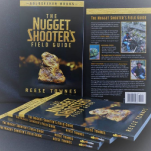
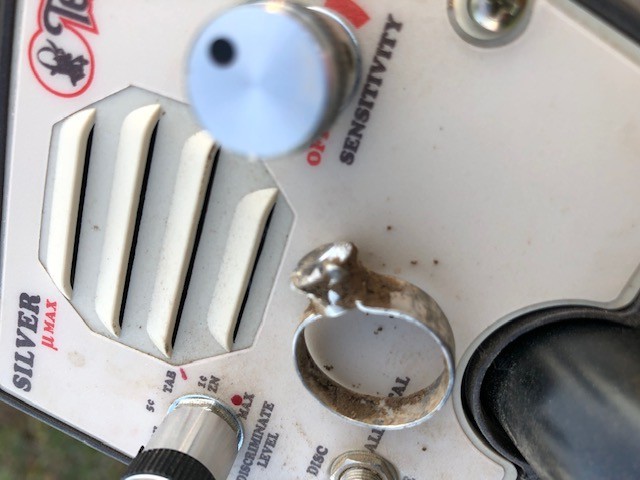
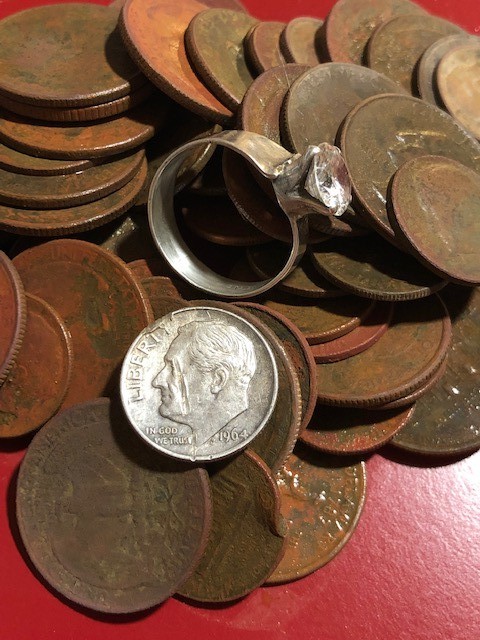
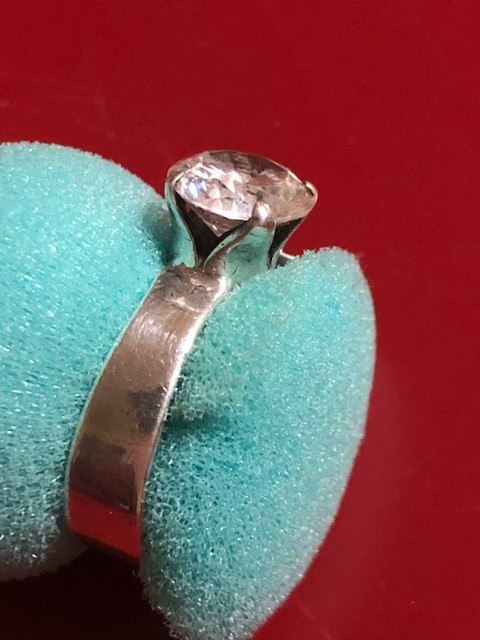

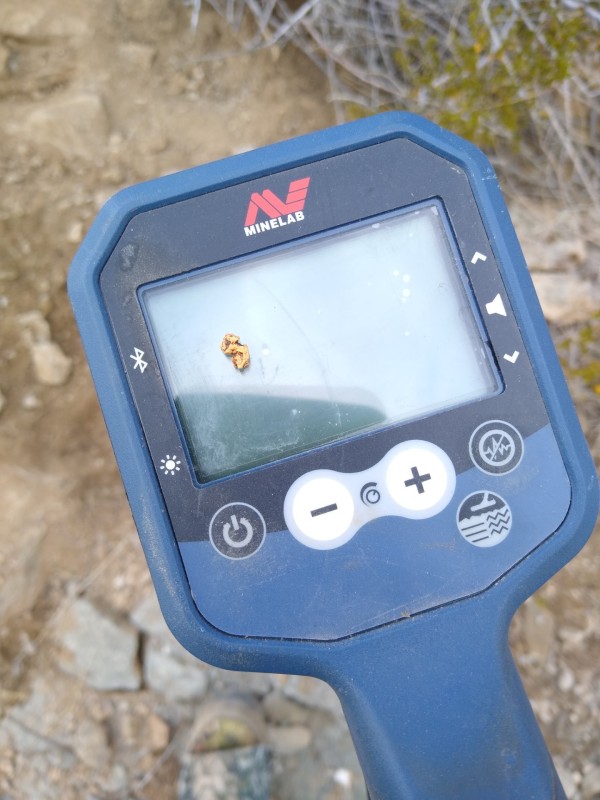
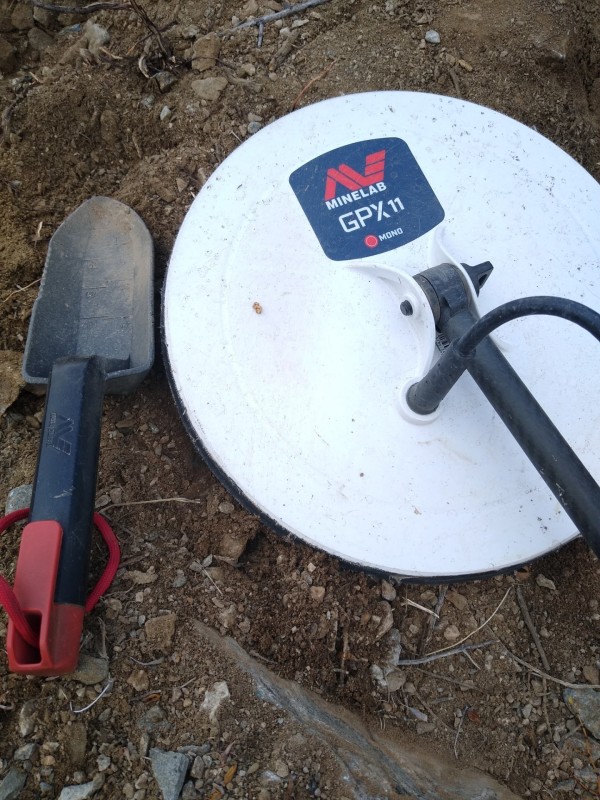
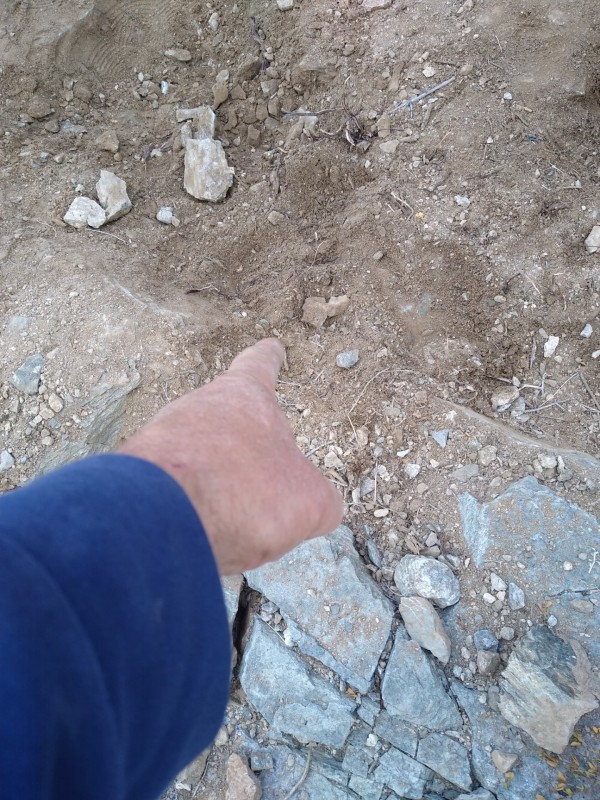
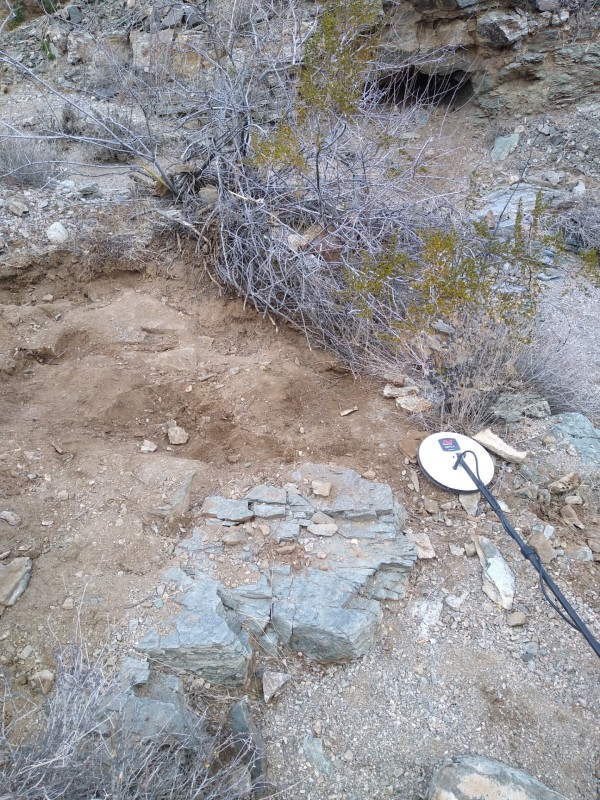
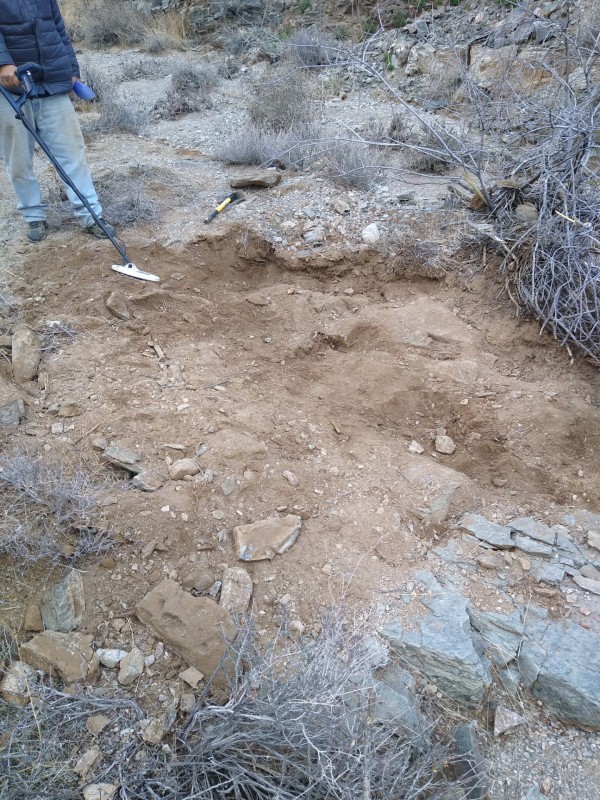
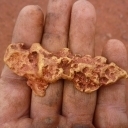
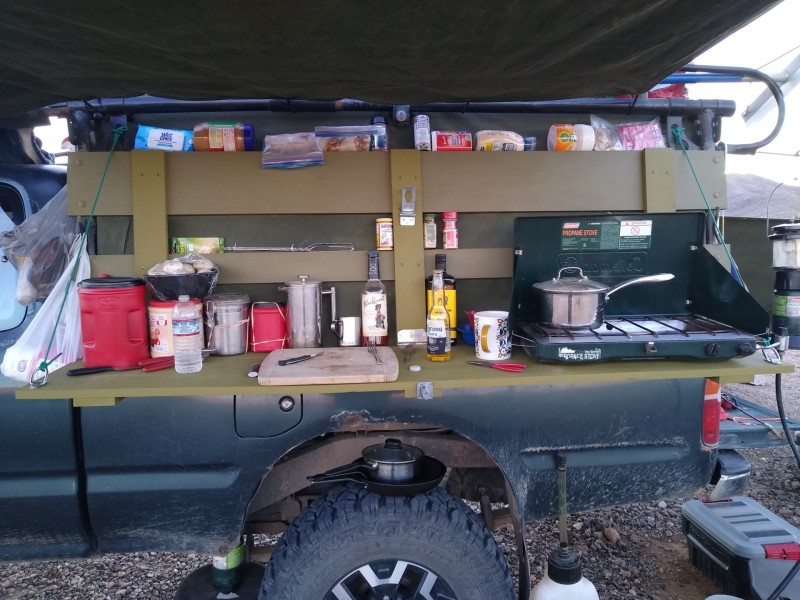
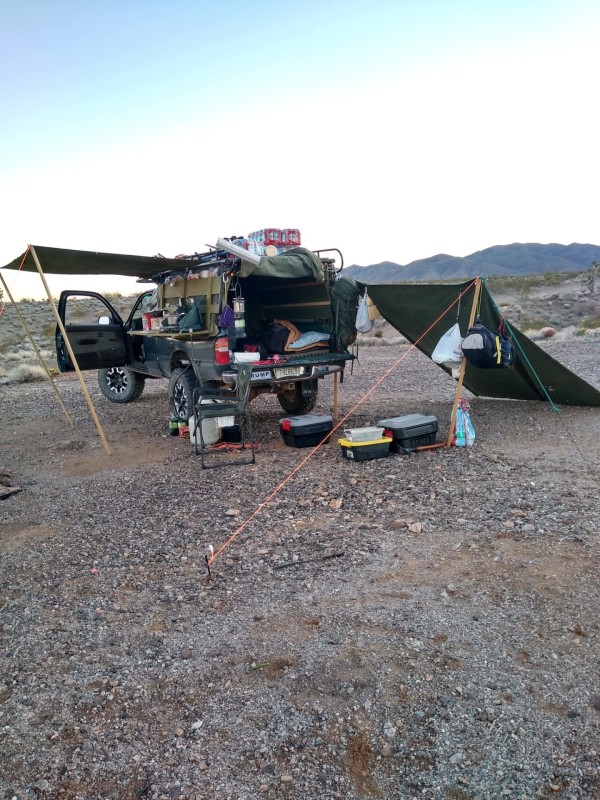
.thumb.jpg.77e4cb5bf39d44bdd2050d2edb7dfdb1.jpg)

